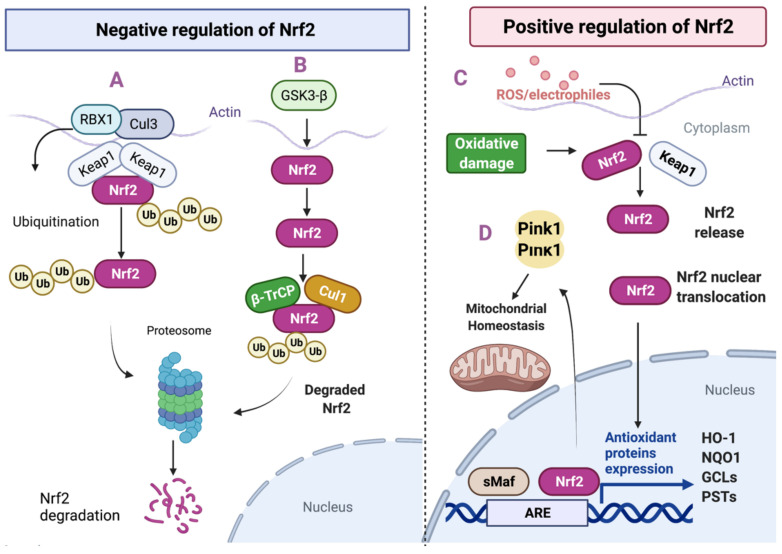Figure 1.
Regulation of the Nrf2 pathway in neuronal cells. (A) Negative regulation of Nrf2. Under basal conditions, Nrf2 expression is maintained at low levels through the proteasome activity. Nrf2 is sequestered by Keap1 in the cytosol leading to ubiquitination through the formation of the Keap1–Cul3-Rbx1 complex, which induces the Nrf2 proteasomal degradation. (B) Negative regulation of Nrf2 by GSK-3β: Nrf2 can also be conducted to degradation by GSK-3β. GSK-3 phosphorylates Nrf2 to create a recognition motif for the E3 ligase adapter β-TrCP. GSK-3/β-TrCP leads to Keap1-independent ubiquitin-proteasome degradation of Nrf2. (C) Positive regulation of Nrf2: in the presence of high ROS levels, Nrf2 is released from Keap1 binding and is translocated to the nucleus and binds to ARE gene sequences, which allows for the activation of antioxidant genes such as HO-1 and NQO1. (D) Mitochondrial homeostasis: PINK1 expression is positively regulated by Nrf2 and promotes mitochondrial homeostasis through several mechanisms such as the removal of damaged mitochondria.

